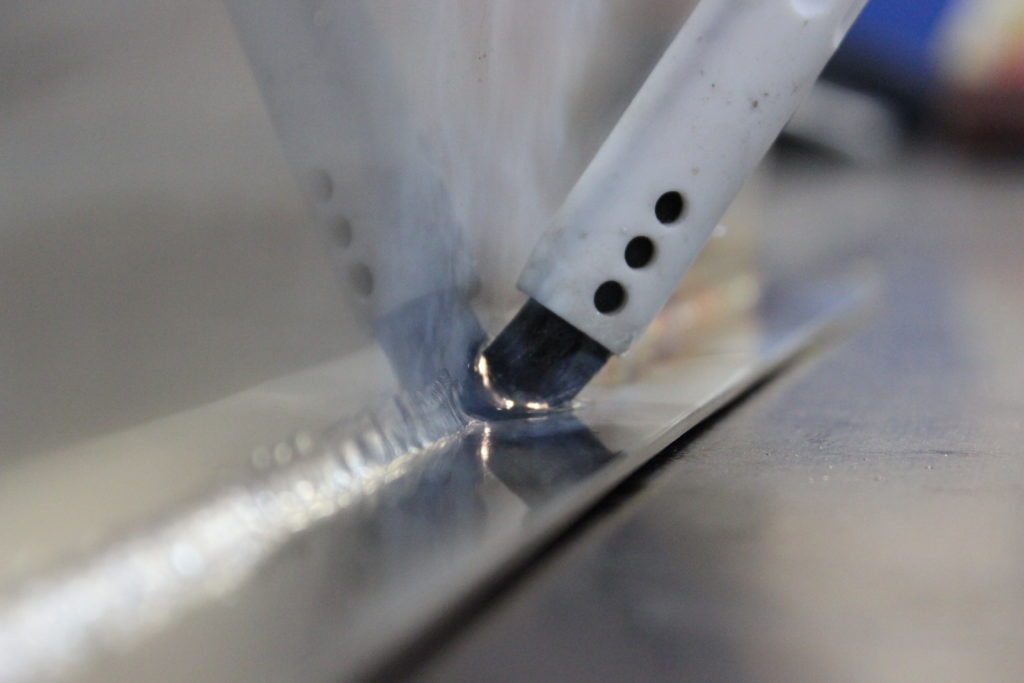5 Disadvantages of Mechanical Grinding
Weld cleaning | Electropolishing | Wednesday, 09 May 2018
5 disadvantages of mechanical grinding
Every manufacturing business that does finishing operations will likely agree that they are expensive. As a matter of fact, they can be the most expensive operation, especially if they are done through mechanical polishing methods.
While there were few options to manual polishing 15 years ago, today there are electropolishing machines that have changed the entire environment of finishing for all manufacturers who have decided to update their methods.
But there are others who believe that mechanical polishing has withstood the test of time and has “proven” itself as the best method for finishing their parts. Whether it’s hand-grinding, polishing, buffing, lapping, or honing, they believe that they’re doing the best for their customers by putting those operations into the hands of skilled workers to ensure a quality finish.
But is that what they’re doing? Are the finishes that result from mechanical polishing superior, safer, more cost-effective, and advantageous than a method such as electropolishing?
Consider these five disadvantages of mechanical polishing, and ask yourself that same question once again:
1. It is labor intensive
Unless you’re running a non-profit organization (and you wouldn’t be reading this if that were the case), you’re always watching your bottom line. And what can put the biggest dent in that number? Labor costs! Controlling your labor expenses is crucial to showing a healthy bottom line.
Mechanical polishing is a process performed on individual parts, usually one at a time. Depending on the condition of the raw part, it can take a substantial amount of time, using a variety of abrasives, to remove those layers of material. Moreover, many of the smaller features of complex parts cannot even be reached using the mechanical method.
And like most other manual operations, that investment of time does not guarantee that the quality or consistency of the finish will always meet the requirements.
2. Some of the abrasives remain embedded
Any mechanically polished metal suffers a profusion of scratches, metal debris, and abrasives embedded in its surface. And any finishing processes that use abrasives, cutting, or burnishing, even if it’s just a small area, will distort the metal surface.
Just for the record, any metal surface that is created mechanically will have a work-hardened and damaged layer that is about .001” deep. That might not sound like much, but within that depth, the metal is torn, scratched, sheared, and contaminated with abrasives and compounds.
You might not be able to see the damage, so it won’t have much effect on the aesthetic appeal of the finished metal, but depending on the application of the part, those contaminants can eliminate it as a safe product. And that brings up the next disadvantage of mechanical grinding.
3. Mechanically polished parts could be harmful
For high purity applications—semiconductor, pharmaceutical, food service, medical, automotive, and aerospace industries, for example–particles and contaminants can be dangerous or devastating. Polished parts for these industries must have clean surfaces to be suitable for use in these sensitive applications.
It’s obvious that mechanical polishing is not an option in these cases. In contrast, electropolished metal parts come through their process with an ultraclean surface that can’t be replicated with mechanical polishing. Electropolishing on the other hand, takes off an even layer of surface material and creates a smooth exterior free of debris or other contaminants.
4. The strength of the surface is weakened
Surface distortion is not the only detrimental side-effect of cold-working metals through mechanical polishing. The damage can penetrate deeply into the metal, lowering its mechanical strength significantly. Tests have shown that a mechanical finishing process that follows a simple cutting operation can reduce the tensile strength of steel with 100,000 psi down to 35,000 psi—a more than 60% reduction!
It should be noted that mechanical polishing fails to remove inclusions and even tends to push them deeper into the surface and increases them as they pick up more abrasive materials. Sometimes these inclusions can cause cracks and fatigue failure in steel.
5. Corrosion Vulnerability
The surface contaminants that remain after mechanical grinding disturb the formation of a corrosion-resistant oxide layer, especially in stainless steel.
Over time, those parts will likely develop rust or corrosion. By contrast, the electropolishing process dissolves free iron, inclusions, and embedded particles from the surface of the part and gives it improved surface chemistry, which allows the metal to form a corrosion-resistant surface layer.
Conclusion
If you’re still doing your finishing operations using outdated mechanical methods, you run the risk of falling behind your competitors. It might take an investment of time to develop and upgrade to an efficient and effective process, but it will be well worth it.
At Cougartron, we can set you up with a weld-cleaning machine that perfectly fits your specific needs and budget. Start getting outstanding results whether it’s cleaning, passivation, or electropolishing you’re looking to do.

How can Cougartron help you?
Let us know what challenge you’re facing, and we’ll work with you to successfully overcome it. Fill out the form below to schedule a free consultation and Cougartron machine demo.
Loading...
Please wait while the form loads.
Weld Cleaning & Polishing Machines
Loading products...
Please wait while the products load.
Weld Cleaning & Polishing Consumables
Loading products...
Please wait while the products load.


 English
English  English (US)
English (US)  German
German  Danish
Danish  Swedish
Swedish  French
French  Polish
Polish  Spanish
Spanish